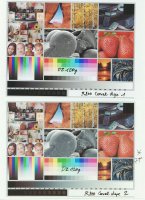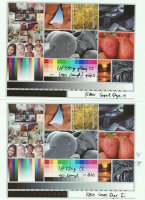martin0reg
Printer Master
Very interesting, I wouldn't have expected such results by using GLO....
..and an overcoat, in this case the gloss optimizer , very much reduces the UV/ozone effect which I cannot separate in such test. ..
- which GLO did you use, OEM or 3rd party like ocp?
- I assume it has to be a second printing, not just ONE print with checked GLO option...
How exactly do you "overprint"? With a special cartridge setup or just an "empty" print..?..what kind of file for overprinting.. blank text page or "white" photo?
I just have reanimated an old R800 and would like to try the coating.



